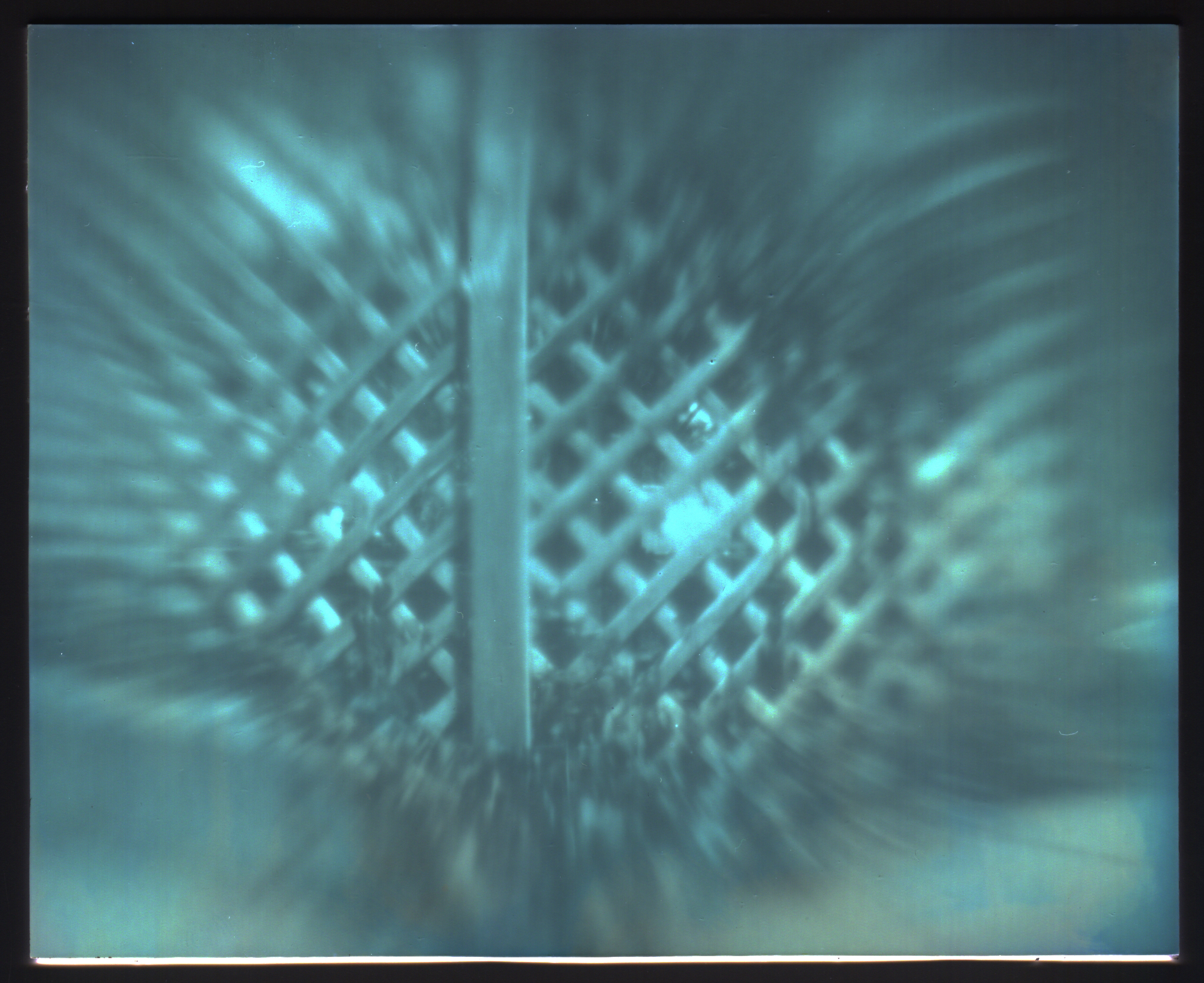Ice, Ice Baby!

I'm posting an article about a photography project that I have not yet made. I don't actually know how successful it will be, truth be told. But I'm posting this in the hopes that, come winter and the cold climate, you'll hold me accountable by ensuring that I haven't forgotten.
The idea is simple, and has probably already been done. Uniqueness isn't the objective (pardon the pun), however. I'm merely curious to know if it'll work, and to see the resulting images for myself.
Back about 150 years ago, photographic technology was cumbersome and the processes trouble-prone, not because people purposefully sought after difficulties, but because the state of the art was primitive. And yet many of them succeeded, remarkably so. My idea is entirely cumbersome and somewhat difficult, and entirely impractical; you wouldn't want to go off and start creating images this way, even considering alternatives such as wet plate collodion, which might be easier to achieve than what I'm thinking of doing.
I want to make a liquid-proof camera that uses an ice lens. A simple, single-element meniscus lens, made from ice, with a paper negative as the light-sensitive medium. And I want the water making up the ice to have about 1/15th of its volume to be concentrated liquid paper developer.
When you mix a working solution of paper developer from liquid concentrate, in a dilution of around 1:15, the solution is slightly yellow in tone. This shouldn't be a major problem for forming an image, as people who do dabble in paper negatives are known to use a yellow filter over their lens to filter out the blue light and therefore make multigrade paper achieve a bit less blown-out contrast in daylight conditions.
My purpose for using frozen paper developer as a lens is not to make it yellow colored (that's merely a side attribute), but for the developing process after the exposure is made. I want to cap the lens, then somehow make the lens fall into the back of the camera, after which the camera will be taken into a warm indoor climate and I'll wait for the lens to melt, then gently agitate the camera so the paper negative will develop an image. After sufficient development time, I'll take the camera into the darkroom (or a changing bag), pour out the melted lens solution and fix the negative.
The camera needs to be made from some waterproof material like opaque plastic, so it will function as a developing tank.
I still haven't figured out how to make the lens fall into the back of the camera after the exposure is made. But I'll figure out something.
Obviously, doing this in sub-freezing temperatures will make the whole process a bit easier.
I don't know how transparent the lens will be, however. Looking at ice cubes coming out of the freezer, some are clear and others frosted over. I suppose a quick spray of water might clean off any frost. I can also foresee the lens frosting over once it's taken outside, if the temperature and/or humidity is not correct. I don't know how to predict what will happen without simply trying.
To mold the ice lenses, I was thinking of finding a certain kind of ice cube tray that make round, cylindrical cubes with a convex, rounded bottom. Then fill each section up to only fill the bottom, rounded section. The result should be a Plano-convex lens shape. A tray with a dozen compartments should give me enough lenses for experimentation.
I'm only assuming that the 1:15 solution of developer and water will still freeze somewhere around the same temperature of regular water.
Totally impractical, right? You wouldn't want to go off and start a portrait business using ice lenses. But it does sound like a fun project, impractical as it might be.
Just ping me with an email come December and remind me to work on this, will you? Thanks!
Post-Script: The top image is a positive inversion of a lumen print, made by exposing light-sensitive paper in a camera without subsequent development; the color change is due to auto-development of the silver halides.
Labels: camera making, ice lenses, paper negative, Photography

2 Comments:
What an interesting concept. I think it's hard to make ice form smoothly without bubbles and irregularities, but I want to see you try!
the concept is weird and yet fashinating. How are you planning to control the focal length in order to have enough (or not too much) bellows extension? Also, are you planning to stop down the lens or just go for it and shoot wide open?
curious to see your attempt and the results
Post a Comment
<< Home